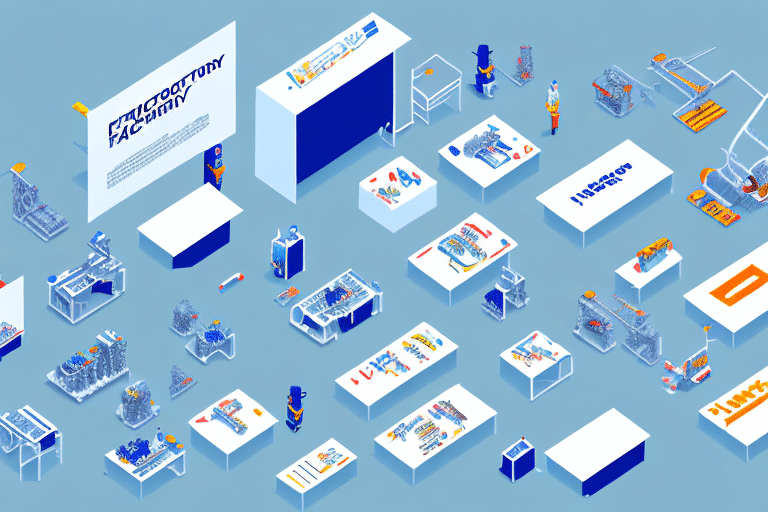Enhance Your Operations with Lean Methodologies
Reducing waste, streamlining processes, and boosting efficiency are essential for any organization aiming to thrive in today's competitive landscape. Lean Methodologies offer a comprehensive approach to achieving these goals. This article delves into the core principles of Lean, the tools and techniques it employs, and provides actionable tips for successful implementation and monitoring.
Understanding Lean Methodologies and Their Benefits
Lean Methodologies are a set of business philosophies and management practices focused on minimizing waste and maximizing value for the customer. At its core, Lean is about achieving more with less by optimizing resources, reducing costs, and enhancing customer satisfaction.
Key benefits of adopting Lean include:
- Cost Reduction: By eliminating non-value-added activities, organizations can significantly reduce operational costs.
- Improved Customer Satisfaction: Streamlined processes lead to faster delivery times and higher quality products or services.
- Increased Efficiency: Optimizing workflows ensures that resources are used effectively, enhancing overall productivity.
- Enhanced Employee Engagement: Involving employees in continuous improvement fosters a motivated and innovative workforce.
According to a Deloitte report, organizations that implement Lean Methodologies can see up to a 25% increase in productivity within the first year.
Core Principles of Lean Methodologies
Lean Methodologies are built upon five fundamental principles:
- Value: Define value from the customer's perspective.
- Value Stream: Map out all the steps in the value stream and eliminate those that do not add value.
- Flow: Ensure that the remaining value-creating steps flow smoothly without interruptions.
- Pull: Produce only what is needed, when it is needed, based on customer demand.
- Perfection: Continuously seek ways to improve processes and eliminate waste.
Embracing these principles helps organizations create more value for customers while using fewer resources, thereby enhancing overall operational efficiency.
Identifying Areas for Improvement with Lean
The initial step in implementing Lean Methodologies is identifying areas ripe for improvement. This involves:
- Value Stream Mapping: Visualize the entire production process to identify bottlenecks and waste.
- Data Analysis: Utilize data to pinpoint inefficiencies and areas where performance can be enhanced.
- Employee Feedback: Engage with employees who are directly involved in processes to gain insights into potential improvements.
Engaging all stakeholders ensures a comprehensive understanding of challenges and fosters a collaborative environment for implementing solutions.
The Role of Employee Engagement in Lean Implementation
Employee engagement is pivotal for the successful adoption of Lean Methodologies. Key strategies include:
- Training and Education: Provide regular training sessions to equip employees with the necessary Lean tools and knowledge.
- Empowerment: Encourage employees to take ownership of process improvements and provide them with the authority to make changes.
- Recognition and Rewards: Acknowledge and reward contributions to foster a culture of continuous improvement.
According to a study by the Harvard Business Review, companies with high employee engagement are 21% more profitable, underscoring the importance of involving employees in Lean initiatives.
Real-World Success Stories of Lean Implementation
Lean Methodologies have been successfully adopted across various industries, leading to remarkable improvements:
- Toyota: Often credited with pioneering Lean, Toyota's adoption of the Toyota Production System has led to reduced inventory levels, shorter production times, and enhanced quality control.
- Amazon: By leveraging Lean principles, Amazon has optimized its supply chain operations, resulting in faster delivery times and improved customer satisfaction.
- Virginia Mason Medical Center: In the healthcare sector, Virginia Mason implemented Lean to reduce patient wait times and enhance service quality, achieving significant improvements in patient care.
These examples highlight how Lean can drive efficiency and excellence across diverse operational landscapes.
Creating a Culture of Continuous Improvement
Establishing a culture of continuous improvement is essential for sustaining Lean initiatives. Effective strategies include:
- Set Clear Goals: Define specific, measurable objectives that align with the organization's strategic vision.
- Regular Reviews: Conduct periodic assessments to monitor progress and identify new areas for improvement.
- Encourage Innovation: Foster an environment where experimentation and innovative thinking are valued.
By embedding these practices into the organizational culture, companies can ensure ongoing enhancements and sustained operational excellence.
Tools and Techniques for Lean Optimization
Lean offers a variety of tools and techniques to streamline processes and eliminate waste:
- 5S: A methodology for workplace organization that enhances efficiency and safety.
- Kanban: A visual workflow management tool that helps teams visualize work, limit work-in-progress, and maximize efficiency.
- Kaizen: A philosophy of continuous, incremental improvement involving all employees.
- Value Stream Mapping: A tool to visualize and analyze the flow of materials and information required to bring a product or service to a consumer.
Implementing these tools can significantly enhance process efficiency and quality.
Avoiding Common Pitfalls in Lean Implementation
While Lean offers substantial benefits, organizations may encounter challenges during implementation. Common pitfalls include:
- Insufficient Training: Failing to adequately train employees can lead to misunderstandings and ineffective implementation.
- Lack of Commitment: Without strong commitment from leadership, Lean initiatives may falter.
- Resistance to Change: Employees may resist changes to established processes, hindering progress.
To avoid these issues, ensure comprehensive training, secure leadership buy-in, and foster open communication to address concerns and encourage buy-in.
Measuring the Impact of Lean Methodologies
To assess the effectiveness of Lean initiatives, it's crucial to track and evaluate key performance indicators (KPIs), such as:
- Customer Satisfaction: Measure through surveys and feedback mechanisms.
- Production Lead Times: Monitor the time taken to complete processes from start to finish.
- Inventory Levels: Track inventory turnover rates to ensure optimal stock levels.
- Cost Savings: Calculate reductions in operational costs attributable to Lean initiatives.
Regularly analyzing these metrics allows organizations to identify successes and areas needing further improvement, ensuring continuous progress.
Involving all stakeholders, including suppliers and customers, in the measurement process can provide comprehensive insights into the impact of Lean Methodologies on overall operations.
Establishing SMART (Specific, Measurable, Achievable, Relevant, Time-bound) goals is also essential for focused and effective measurement, enabling organizations to track progress and make informed adjustments as needed.
Conclusion
Implementing Lean Methodologies is a transformative approach that can significantly enhance organizational operations by reducing waste, optimizing processes, and improving customer satisfaction. By understanding and applying Lean principles, engaging employees, utilizing effective tools, and continuously measuring performance, organizations can foster a culture of continuous improvement that drives long-term success and growth.




















